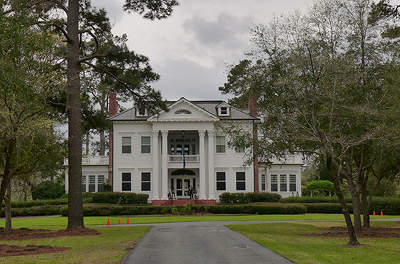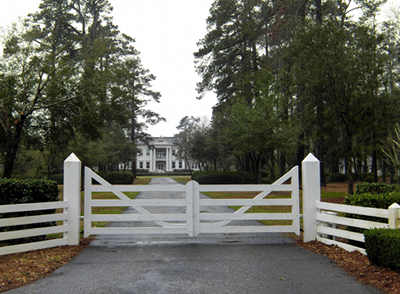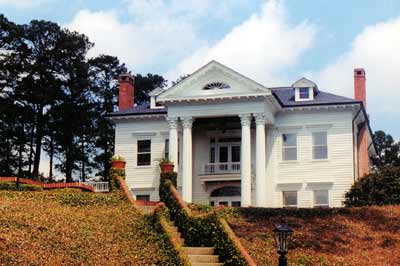Rice Hope Plantation – Oatland – Georgetown County
Basic Information
- Location – Black River, Oatland, Georgetown County
Located northwest of US 701 at Post Foot Landing off Choppee Road
- Origin of name – Named after the rice crop that made so many planters wealthy
- Other names – Black River Plantation, International Paper Company House, Waddell Ranch
- Current status – Privately owned
Timeline
- Prior to 1742 – Earliest known date of existence
Daniel Shaw received a warrant for 850 acres (1, p. 8) (2, p. 511).
- 1742 – Daniel Shaw wrote his will stating his son Amos was to obtain a grant for his warrant (2, p. 511).
- 1744 – Daniel died and Amos had the 850 acre warrant surveyed and received the grant (2, p. 511).
- 1751 – Amos Shaw sold the plantation to William Turner (2, p. 511).
- 1754 – William Glenn was owner of Rice Hope (1, p. 7) (2, p. 511).
- 1765 – William and Martha Glenn sold the plantation to Henry Futhy (1, p. 7) (2, p. 511).
- 1797 – Captain Francis Green owned the property (1, p. 7).
- 1807 – William Green was owner (1, p. 7-8).
- 1833 – Sometime after this year, John Potts Ford acquired Rice Hope Plantation (2, p. 513).
- 1856 – Ford died and his wife and daughters remained at Rice Hope. Ford's son-in-law Paul Fitzsimons took over the plantation's rice production (2, p. 513).
- 1871 – Fitzsimons passed away and his wife Martha Selina Ford Fitzsimons appears to have been Rice Hope's owner. She leased the plantation to her son-in-law George LaBruce (2, p. 513).
- 1884 – Martha died and Rice Hope passed to her youngest sister Ann Elizabeth Ford. Ann was married to first cousin Thomas Ford. The Fords ran into financial troubles and obtained a mortgage from Oliver Brightman Skinner using Rice Hope as collateral (2, p. 514).
- ? – The Fords defaulted on the mortgage and Rice Hope was foreclosed on. The plantation would be transferred to Skinner's widow and heirs (2, p. 514).
- 1919 – The heirs of O.B. Skinner sold the plantation to James A. Waddell (2, p. 514).
- 1919 – Waddell began a cattle business and deeded the property to the Waddell Ranch Corporation. He also built a large house on a bluff overlooking the river (1, p. 5) (2, p. 514).
- 1928 – Waddell declared bankruptcy and lost the plantation to foreclosure (1, p. 8).
- 1928 – Willis E. Fertig purchased the property (1, p. 8).
- 1942 – The plantation was purchased by the International Paper Company from Fertig and was used as a resort by employees and guests (1, p. 5).
- 1986 – The International Paper Company sold to John and Suzanne Hudson. The Hudsons restored the house and grounds (1, p. 8) (2, p. 514).
- 2004 – The nursing home scenes in the movie The Notebook were shot at the plantation.
Land
- Number of acres – 850 in 1744; 11.25 in 1993 (1)
- Primary crop – Rice
Slaves
- Number of slaves – ?
Buildings
- It has long been rumored that the 1919 house was a Sears 'kit house.' Kit houses were very popular at this time but the Rice Hope Plantation is not a Sears house (1, p. 5).
References & Resources
- National Register of Historic Places
– Nomination form - PDF - submitted in 1993
– Photographs, architectural overview
- Suzanne Cameron Linder and Marta Leslie Thacker, Historical Atlas of the Rice Plantations of Georgetown County and the Santee River
(Columbia, SC: South Carolina Department of Archives and History, 2001)
 Order Historical Atlas of the Rice Plantations of Georgetown County and the Santee River
Order Historical Atlas of the Rice Plantations of Georgetown County and the Santee River





